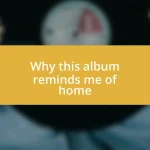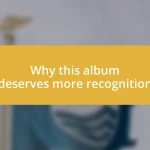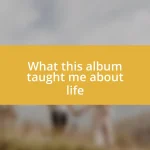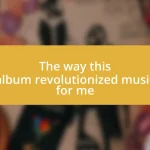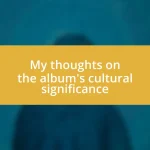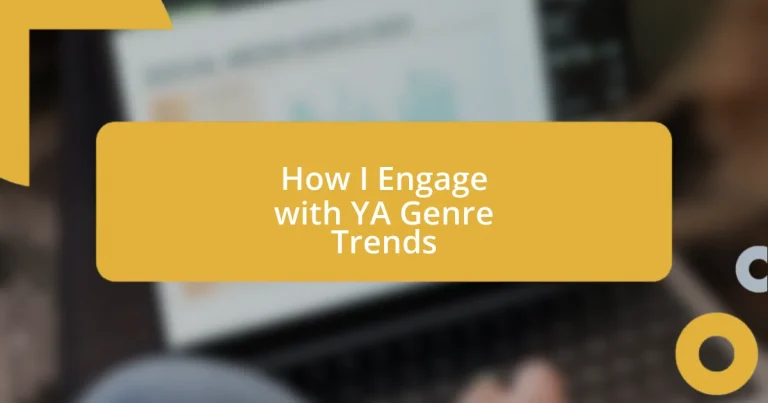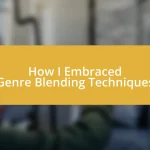Key takeaways:
- YA literature evolves with societal changes, highlighting themes like mental health, diversity, and hybrid genres to resonate with young readers.
- Engagement through social media and personal interactions with readers fosters community, allowing for real-time discussions and personal connections to literature.
- Collaborating with authors and creating trend-inspired content enhances understanding of YA themes and encourages critical thinking among young audiences.
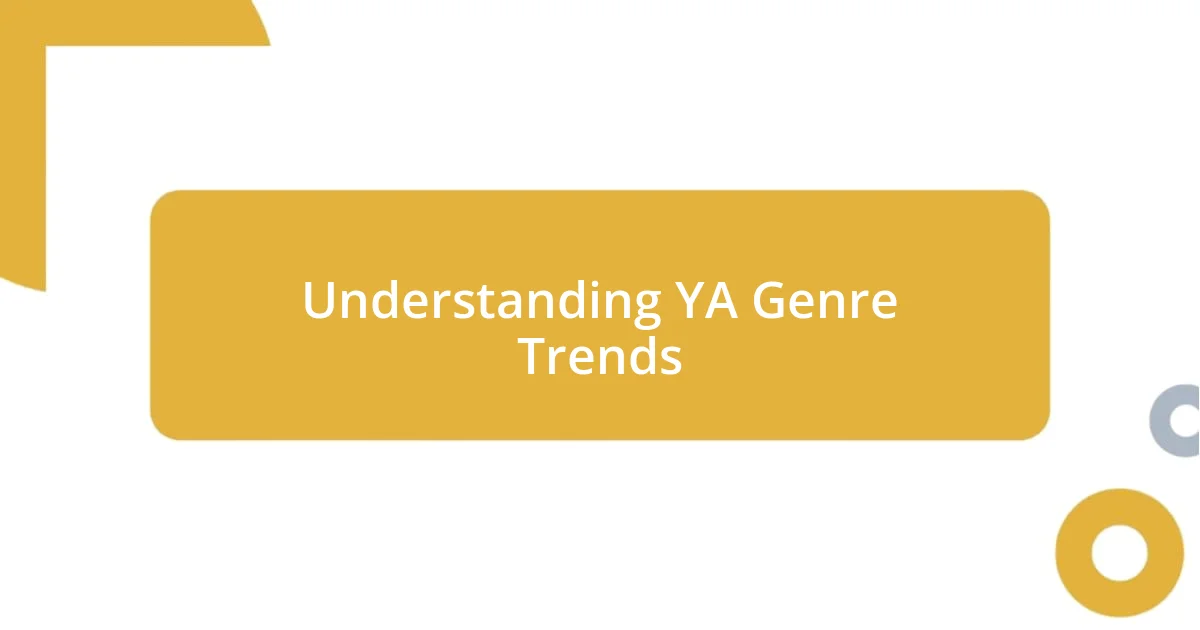
Understanding YA Genre Trends
Understanding YA genre trends requires more than just a glance at the latest bestsellers. I often find myself reflecting on how these trends capture the unique struggles and aspirations of young adults today. For instance, when I picked up a novel featuring mental health issues as a central theme, it resonated deeply with my own experiences as a teen navigating similar challenges. Have you ever read a story that made you feel seen?
What I really appreciate about YA literature is its ability to evolve alongside its audience. As societal norms shift, so too does the content—diversity and representation are increasingly at the forefront. I remember discussing with a friend how empowering it is to see characters of different backgrounds and identities, which not only enriches storytelling but also invites discussions that were once considered taboo. Isn’t it exciting to explore narratives that reflect our own lives and those of others?
Moreover, the rise of hybrid genres like fantasy fused with contemporary issues speaks to the creativity of young adult authors. I recently dove into a series that artfully blended magical elements with real-world problems, capturing my imagination while providing a lens to examine today’s complexities. This trend invites us all to consider: how can fiction transcend its boundaries to tackle the realities we face?
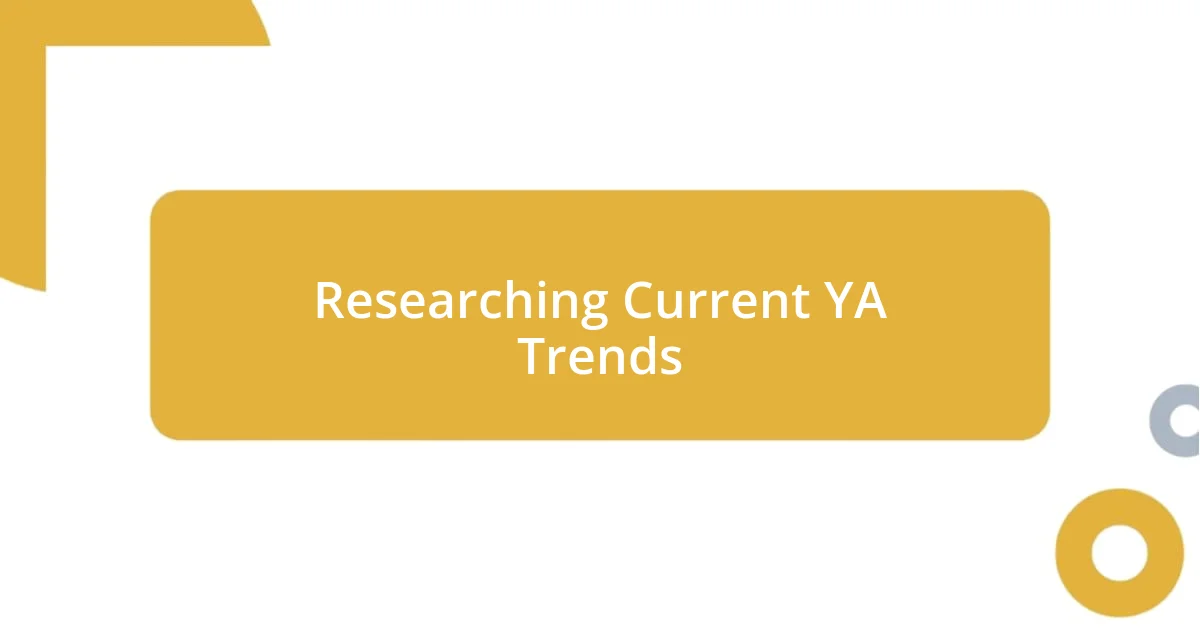
Researching Current YA Trends
Researching current YA trends often means immersing myself in the latest buzz within the community. For example, I recently joined a book club where members passionately discussed the latest titles featuring climate change as a theme. It struck me how these narratives not only entertain but also serve as a wake-up call for young readers, compelling them to think critically about their world. Have you found yourself thinking differently after reading a compelling story?
I also find that social media plays a critical role in uncovering what resonates with the young adult audience. Platforms like TikTok and Instagram have become cultural hubs where trends explode overnight. I recall watching a TikTok that highlighted a new book series, and within days, it was everywhere. This instant feedback loop between creators and consumers shapes the stories being told, allowing authors to adapt their narratives in real-time. Isn’t it fascinating how this interaction can redefine what stories become popular?
Lastly, I often look at bestseller lists, but I also dig deeper. Reading reviews and discussions online provides insights into the emotional connections readers make with certain characters and themes. Recently, I explored a series that dealt with identity and acceptance. Seeing readers share their personal struggles in the comments made me realize how influential these stories can be. This level of engagement enhances my understanding of what drives trends in YA literature.
| Trend | Description |
|---|---|
| Mental Health Themes | Focus on characters navigating mental health challenges, resonating with young readers. |
| Diversity and Representation | Increasing presence of characters from various backgrounds, enriching storytelling and discussions. |
| Hybrid Genres | Blending genres like fantasy and contemporary issues to address real-world problems. |
| Social Media Influence | Platforms shaping trends and popularizing books through instant community feedback. |
| Reader Engagement | Online discussions revealing emotional connections and driving trends in storytelling. |
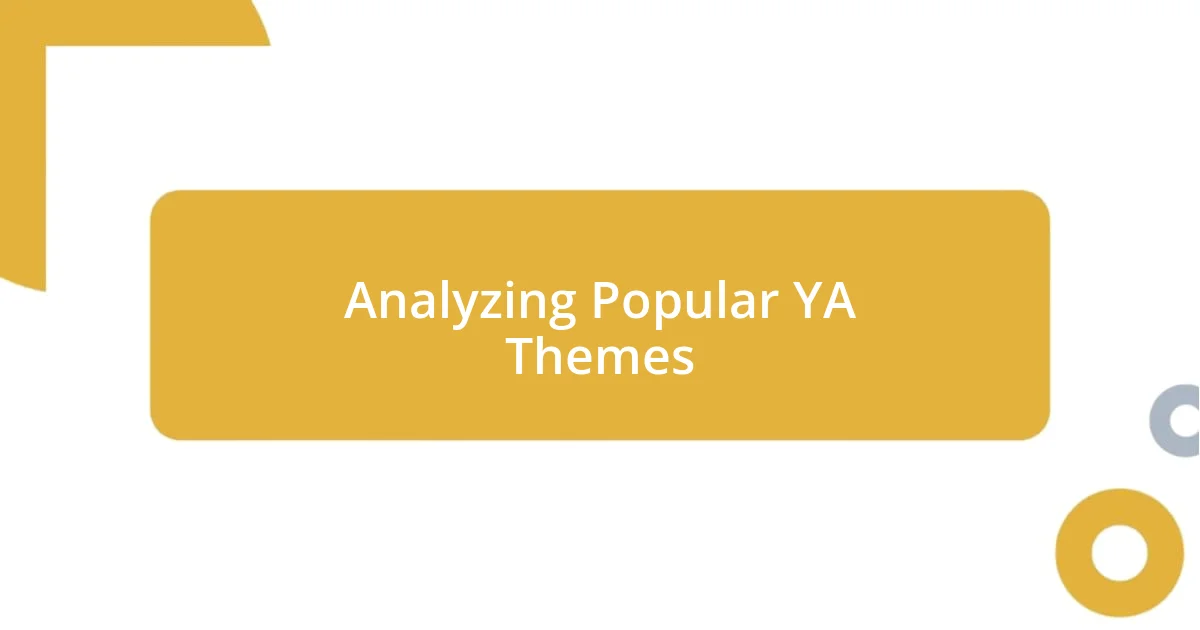
Analyzing Popular YA Themes
When I analyze popular themes in YA literature, I often think about the profound impact they have on young readers’ lives. Recently, I read a book centered around friendships tested by betrayal, and it reminded me of my high school days when I experienced a similar heartache. Such themes resonate deeply, allowing readers to process their emotions and navigate their own social landscapes. It feels like a safe space where they can reflect on their experiences through characters who feel real and relatable.
Here are some key themes I’ve noted in popular YA literature:
- Love and Relationships: Explores the complexities of young love, heartbreak, and friendship dynamics.
- Identity Exploration: Characters embarking on journeys of self-discovery, grappling with their identities.
- Social Issues: Stories addressing topics like bullying, mental health, and systemic injustices, encouraging empathy and engagement.
- Adventure and Escape: Narratives that provide an escape, where young readers can experience thrilling adventures and extraordinary worlds.
- Empowerment and Agency: Protagonists often challenge societal norms, reflecting an innate desire for independence and empowerment.
What I find particularly interesting is how YA themes often mirror real-life struggles, making the narratives feel authentic. For instance, I’ve noticed a surge in stories that tackle the nuances of family dynamics. One book I read recently illustrated a teenager’s struggle with parental expectations, a theme that struck a chord with me. It reminded me of the pressures I felt while trying to balance my dreams with my family’s expectations. These connections help foster dialogue between readers, affirming that they are not alone in their experiences. Wouldn’t it be wonderful if more adolescents felt seen in such a heartfelt way?
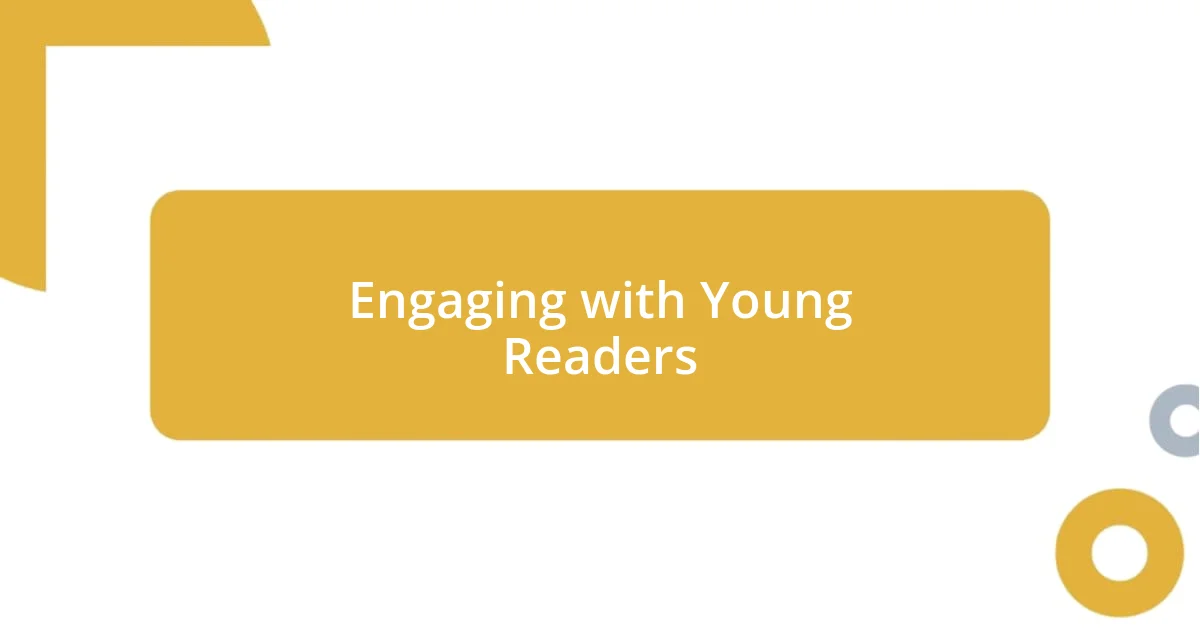
Engaging with Young Readers
Engaging with young readers requires a nuanced approach that acknowledges their unique perspectives. I remember a time when I hosted a virtual discussion group about a recent YA novel that tackled issues of mental health. The conversations that unfolded were incredibly profound, revealing how eager young readers are to connect with stories that reflect their struggles. It’s moments like these that remind me how vital it is to create a space where their thoughts and feelings are validated. Have you ever witnessed a discussion that transformed the way readers viewed a story?
I often leverage social media as a tool for engagement, posting thought-provoking questions that encourage interaction. For instance, I shared a quote from a novel that sparked intense debate about character motivations. The flood of responses ranged from personal stories to differing opinions on the character’s choices, showing me just how invested young readers can be in the narratives they consume. The enthusiasm and passion they express truly highlight the importance of fostering community around books. How do you engage with young readers in your circles?
On a personal level, I often find inspiration in the creative ways young readers express their thoughts. I once stumbled upon a blog run by teens discussing their favorite characters and the lessons they learned from them. Their insights were both refreshing and enlightening, illustrating their deep engagement with the material. It’s a reminder to me that when young readers feel empowered to share their interpretations, it not only enriches their experience but also creates a vibrant dialogue that benefits everyone involved. What imaginative ways have you encountered for young readers to express themselves?
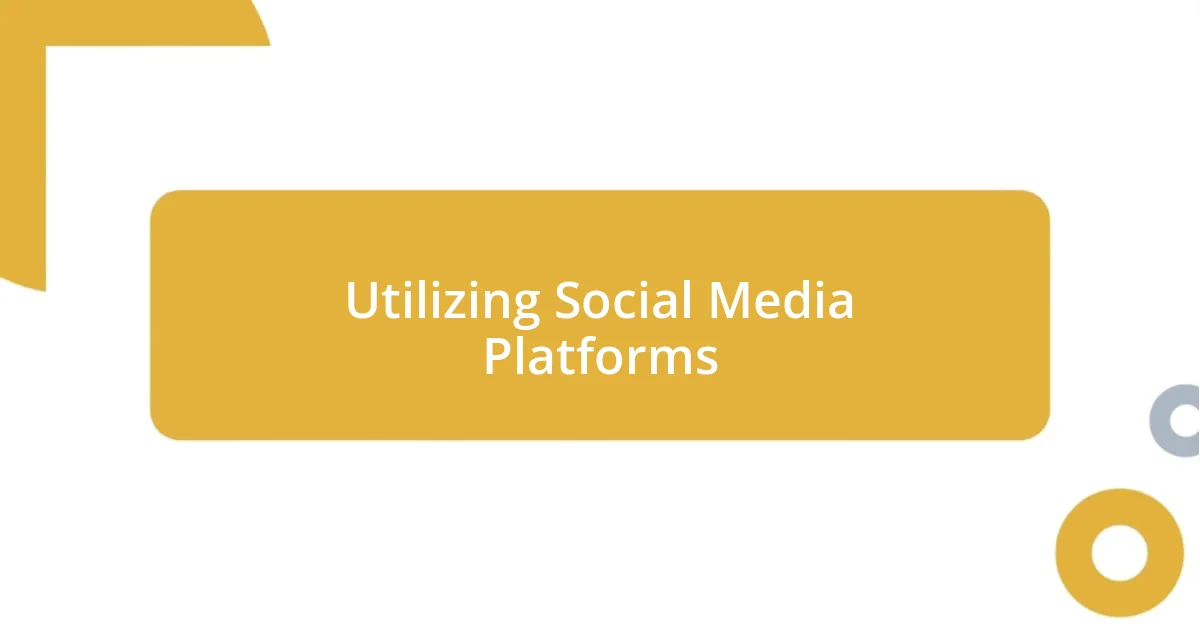
Utilizing Social Media Platforms
Utilizing social media platforms can truly amplify engagement with the YA genre. I remember one time when I used Instagram to launch a weekly book challenge themed around identity exploration. Each post featured a character from a YA book, prompting readers to share their own experiences of self-discovery in the comments. The community that blossomed around those discussions was heartwarming. It felt like a safe haven for sharing, connecting, and reflecting—something that brings me immense joy as a content creator.
Another powerful tool is the potential for real-time conversations through platforms like Twitter. After reading a thought-provoking novel about bullying, I decided to host a live tweet session. I posed questions and engaged directly with readers as we shared our thoughts. It was exhilarating to see how quickly everyone chimed in, sharing personal anecdotes that mirrored the themes we discussed. Isn’t it amazing how a single tweet can open up a heartfelt dialogue?
Lastly, I find TikTok to be an inspiring hub for creative expression among young readers. I once watched a video of a teenager recreating pivotal scenes from a beloved YA book using clever skits. The humor and authenticity of their interpretation ignited a wave of comments from viewers who related deeply to the characters. Moments like this underscore the beauty of using social media to foster a sense of belonging and connection. How do you think these platforms shape the way young readers engage with their favorite stories?
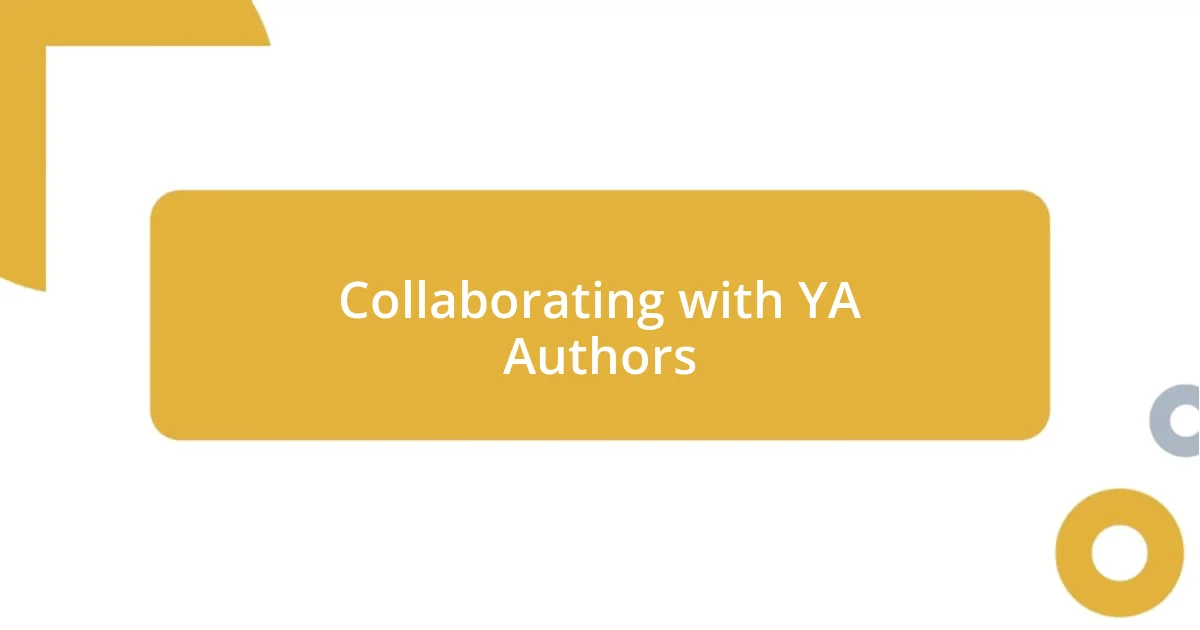
Collaborating with YA Authors
Collaborating with YA authors has been one of the most rewarding experiences in my journey as a reader and content creator. I vividly remember co-hosting a virtual event with a debut author whose book focused on LGBTQ+ representation in YA. The atmosphere was electric as we discussed the motivations behind their characters. It was enlightening to hear firsthand how their own experiences shaped the narrative. Have you ever had the chance to speak directly with an author about their work?
Another memorable collaboration involved teaming up with an author on a writing workshop. We delved into the complex themes of identity and belonging that often resonate strongly with young adult audiences. Engaging with participants as they crafted their own stories was nothing short of magic. It reminded me that every voice has the potential to create meaningful connections. Seeing those young writers light up as they shared their stories truly highlighted the importance of empowering the next generation of storytellers. How do you view your role in nurturing budding writers?
Through these collaborations, I also developed a deep appreciation for the unique perspectives YA authors bring to the table. Their firsthand accounts of navigating the industry and connecting with young readers opened my eyes. I recall a candid chat with an author about the struggles of addressing sensitive topics in their books while maintaining authenticity. It struck a chord with me, reinforcing the idea that storytelling is not just an art but a responsibility. Have you ever considered the impact an author’s genuine voice has on their readers?
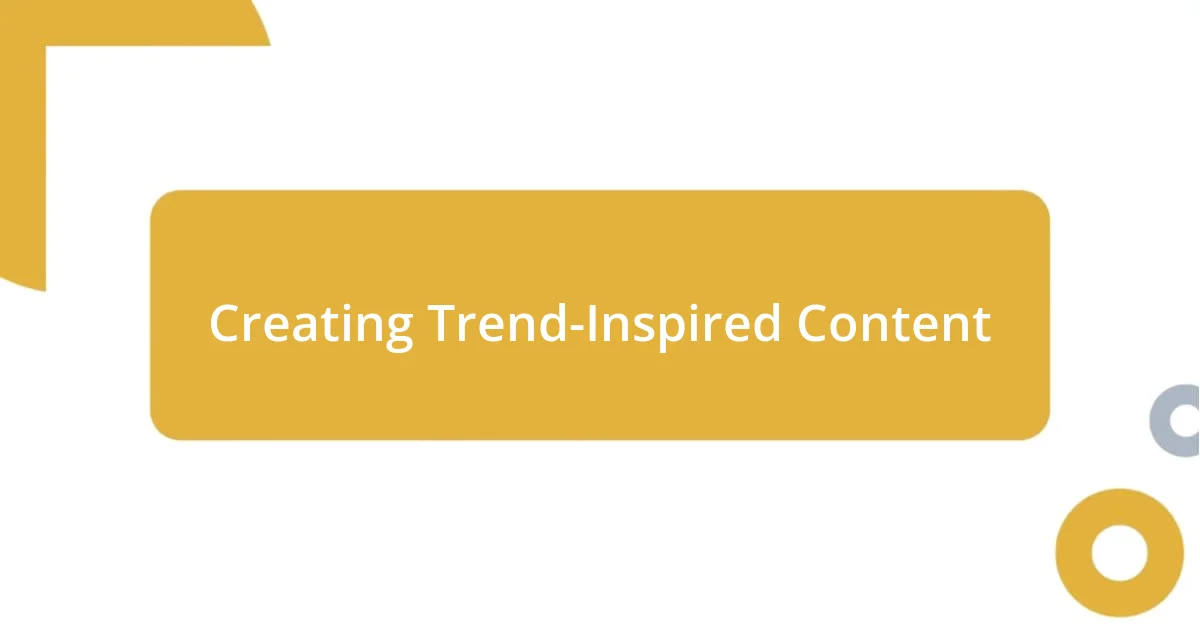
Creating Trend-Inspired Content
Creating trend-inspired content allows us to tap into current discussions and resonate with young readers on a deeper level. I once dived into the rising trend of mental health awareness in YA literature by crafting a series of blog posts that explored various characters’ struggles and triumphs. It was enlightening to see how my audience connected their own experiences with these narratives, illustrating the power of relatable storytelling. Have you ever noticed how a character’s vulnerability can spark a profound conversation?
Additionally, I’ve experimented with incorporating popular tropes or themes into my content, such as the “chosen one” narrative, but with a twist. For example, I wrote a piece about how secondary characters play pivotal roles in shaping the hero’s journey, spotlighting underrated books for those who might feel sidelined in their reading. This approach not only engaged readers who felt overlooked but also encouraged them to think critically about the stories they love. Does it make you rethink which characters deserve more attention?
Engaging with current aesthetics, like ‘dark academia’ or ‘cottagecore’, has also inspired my content creation. I recall curating a reading list with visuals that mirrored the vibe of these trends, and the response was incredible. Readers didn’t just engage with the list; they shared their own interpretations and personal stories tied to those aesthetics. Isn’t it something remarkable how a certain visual or theme can ignite imaginations and forge connections among readers?

